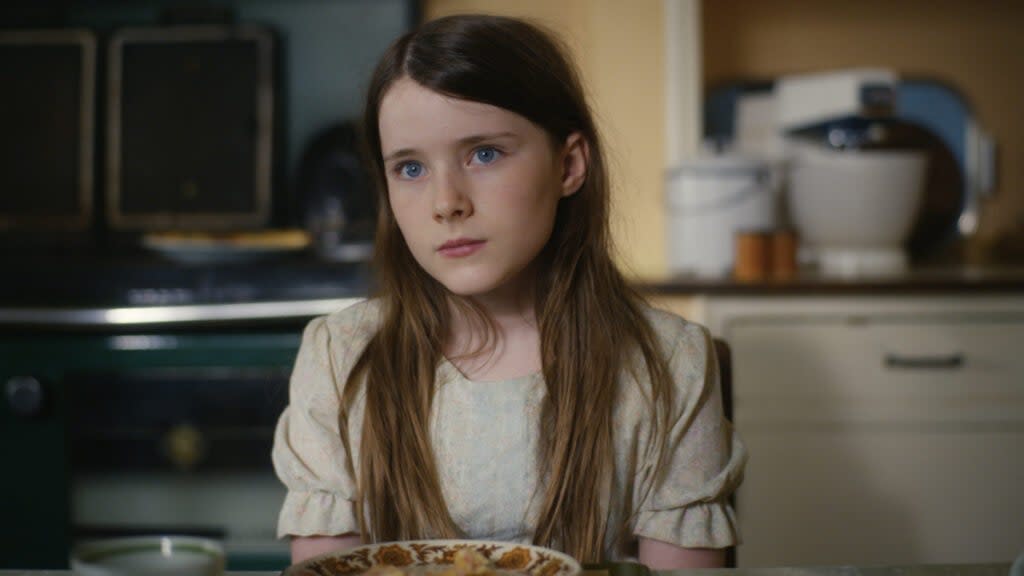‘The Quiet Girl’ Review: Ireland’s Oscar Entry Proves There’s Such a Thing as Too Much Quiet Contemplation

- Oops!Something went wrong.Please try again later.
- Oops!Something went wrong.Please try again later.
There is enough material for a short film in “The Quiet Girl,” an adaptation of Claire Keegan’s story that marks the first narrative feature from director Colm Bairéad, who concentrates for long stretches on visual effects with light that soon start to feel repetitive and pictorial rather than illuminating of character or story.
We first see our main character, a young girl named Cáit (Catherine Clinch), hiding in the tall grass of a meadow as her parents call her name; the characters in “The Quiet Girl” mainly speak in Gaelic, and so there are subtitles even if they speak in English. When Cáit runs back home, we see a crying baby, and her mother upbraids her for coming into the house with mud on her shoes.
Bairéad and director of photography Kate McCullough (Hulu’s “Normal People”) emphasize Cáit’s alienation from her surroundings in their compositions, but they also strive to give the images a very soft look, with ghostly light on Cáit’s serious face. Cáit is always looking down and then looking up apprehensively, as if she expects some calamity at any moment, which is justified when boys knock some milk into her lap at school; other kids call her “a weirdo” because she keeps so much to herself.
Also Read:
Oscars International Race Hits 92 Entries, One Short of All-Time Record
The effects with light that McCullough gets in these early scenes can be entrancing, as when she catches the way that a white neon light above a bar molds the head of Cáit’s father in profile, or the pink light from a television set as it is reflected on a wall. This first section of the film is from Cáit’s point of view, and Cáit is a daydreamer, a woolgatherer, and these visuals get that across.
But once Cáit’s father brings her to the house of relatives because they have too many mouths to feed at home, Bairéad starts to repeat his visual effects, showing us a long shot of the kitchen at least twice too many times. The viewpoint subtly shifts to Eibhlín (Carrie Crowley), who looks at Cáit with dawning and intense love when the little girl gets out of her father’s car.
Also Read:
‘The Wonder’ Review: Florence Pugh Stuns as a Woman of Science in a Community of Faith
Eibhlín tells Cáit to never keep secrets from her: “If there are secrets in the house, there is shame in the house,” she says. In most movies, we would wonder if something bad is going to happen to Cáit in this situation, but by the mid-section of “The Quiet Girl” nothing at all seems to be happening. There is a shot of Cáit staring at the wallpaper in her room, and then a shot of the wallpaper; later on, there is a close-up of the wallpaper, on which are images of a man behind a fence looking at a train. We are laboriously being told something we already know, which is that Cáit would like to escape.
Bairéad keeps cutting back to shots in the family kitchen, and there comes a point when these soft images seem to be saying, “Why don’t you close your eyes and go to sleep?” When Cáit is taken to a funeral, nothing happens aside from her yawning and covering her yawning mouth with her hand, and such yawns are contagious.
Also Read:
‘God’s Creatures’ Review: Emily Watson Anchors Powerful, Unsettling Irish Drama
Inevitably, there is a secret revealed to Cáit, which is relayed by a gossipy older woman, but it doesn’t change the sleepy tone of “The Quiet Girl” or the feeling that Bairéad is padding out the narrative with unnecessary shots, like a close-up of tea being poured at that funeral.
The ending of “The Quiet Girl” is modestly dramatic compared to what has preceded it, but the emotional charge we are presumably supposed to feel has been cut off by all the contemplative long shots that have kept us for so long at arm’s length.
“The Quiet Girl” plays NYC and LA for a one-week run on Dec. 16 before opening wide in February 2023 via Super LTD.

